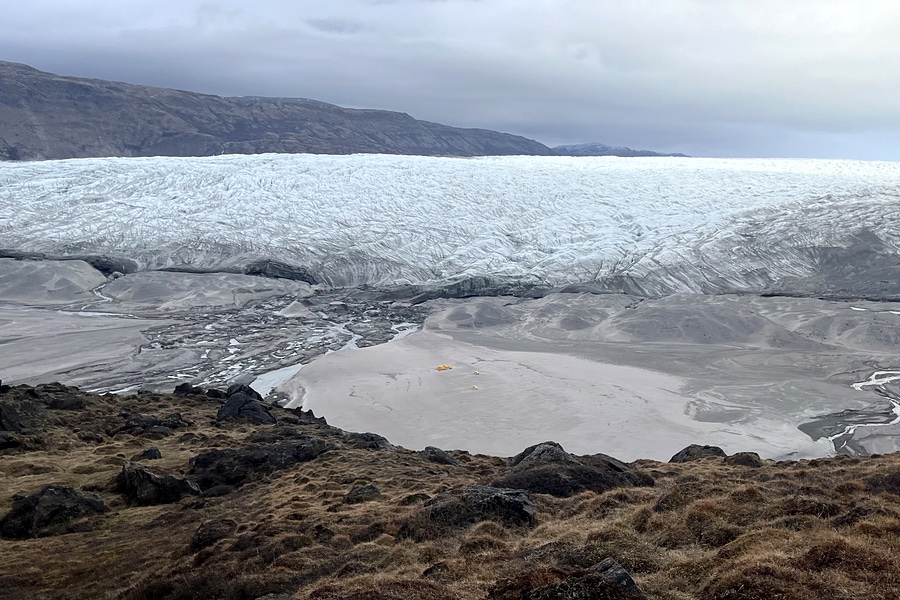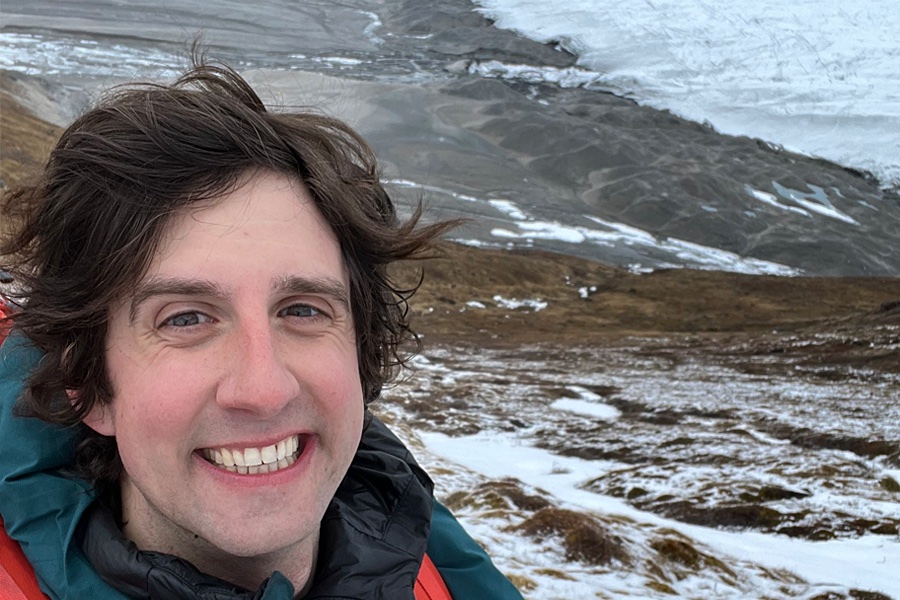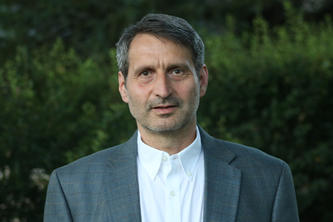
Despite being buried under a mile or more of ice, microbes eke out an existence at the boundary where the Greenland ice sheet grinds away at the ground.
What those microbes do could affect ocean ecosystems now and in a future postglacial world, says College of Biological Sciences graduate student Christopher Hansen. He works on Greenland’s west coast, at the foot of a glacier that, like the last section of a gigantic conveyor belt, carries iron, phosphorus, silica, and other nutrients vital to oceanic life toward Baffin Bay.
Hansen wants to uncover the geochemical controls on “these hidden, subglacial environments” and how they affect the nutrients that are released.
“Once the ice sheet disappears, these nutrients may no longer be produced and no longer deposited downstream—[not to mention] the big consequences of sea level rising around 24 feet,” he says. According to the National Snow and Ice Data Center, "Since 1998, enough ice mass has been lost to cover Australia knee-high in meltwater."
Also, he says, microbial activity may affect the local production of greenhouse gases, especially methane.
Gifts from a glacier
Obtaining samples of study material from the muddy underbelly of a glacier is all but impossible. Hansen, however, has no problem, because the glacier he studies hands him all the samples he needs.
It starts when meltwater seeps through cracks and crevasses to the bottom of the ice sheet. Squeezed by the ice’s immense weight, stunning fountains of meltwater burst from below the leading edge of the glacier. Pools of this water bear clues to the genetic and metabolic character of microbial life under the ice.
“By looking at these pools, we hope to get some insight into what's happening beneath these glaciers,” Hansen explains. For example, “What kinds of resources are limited? What are these microbes doing? What are they eating? And how might that affect what kind of nutrients are being cycled prior to export throughout the entire year?”
Life on the fringe
“We like to do fringe work,” says Trinity Hamilton, Hansen’s adviser and an associate professor in the Department of Plant and Microbial Biology. Hansen’s studies are a perfect example.
He works at the fringes of Greenland’s Isunnguata Sermia glacier (Isunnguata=a place name, Sermia=glacier). And being barely a stone’s throw from the Arctic Circle, his site rests at the fringes of both the Arctic and the northern temperate zone.
So what’s it like up there?
“The coolest thing was witnessing the dynamic features and scale of glacier outlets adjacent to the Greenland ice sheet,” Hansen says. “The vibrant, alien blue color and complex, flowing, crevasse-laden formations took my breath away. The scale of these environments is wild—they stretch far past the horizon.”
Hansen loves both the adventure and the challenges of working with an unimaginably massive, fickle research subject that yields its watery secrets in response to changes in the melting conditions. More personally, he enjoys talking with Greenlandic locals to learn about “their knowledge of temporal changes to the area, native words for our sampling sites and ice structures of interest, and way of life near arctic fjords.
“Mistakes will totally be made,” he notes, “but we always learn during fieldwork and create incredible bonds along the way.”
- Categories:
- Science and Technology
- Climate Change
- Science






